NDTV Ground Report: Drugs At Centre Of China's 'Three Warfares' Strategy
The Chinese fund and support Myanmar's military junta. The junta in turn hire NSCN (IM) and ZRA to fight on their behalf and provide protection to poppy fields

Athisa Koso is in her 50s and has a ready smile and watchful eyes. Mother to nine, her hands are full but she -- like many other mothers in some states in the northeast region -- has learnt to constantly watch her children closely in silence, looking for changes in behaviour, which would give her a clue as to whether they were in "bad company".
Ms Koso says she had a dream one night. "In the dream, I saw my son taking number 4," she told NDTV.
"Number 4" is the street name for heroin in Nagaland's Dimapur city.
Ms Koso says she began to watch her son and his friends, and found he would hang out with people older than him and even followed them a few times. Over time her suspicions were confirmed. She decided to take matters into her own hands.
"I insisted that he had to be home for dinner with the family and for evening prayers," she says. "With a mother's love, I made him tell me the truth and then sent him to a rehabilitation centre for deaddiction."
Her son has returned home now and is rid of the drug habit. But she continues to watch over him like a hawk.
Every home in this middle class neighbourhood has a drug user, she tells NDTV.
"Every family here is suffering. There is an emotional burden on everyone, but also a financial one."
This is the biggest impact of China's debilitating 'Three Warfares' strategy - pumping drugs into India's northeast to weaken and destroy the fabric of society.
There are countless rehabilitation centres in some of the states in the northeast which are most affected by drug abuse. Children are hooked to a variety of easily available drugs by the time they reach Class 7, data shows.
The source of these drugs?
Armed insurgent groups like the National Socialist Council of Nagaland (Isak-Muivah), or NSCN (IM), and the Zomi Revolutionary Army (ZRA), which bring drugs from Myanmar and China for sale in India.
After the outbreak of ethnic violence in Manipur in May 2023 and the subsequent high security in the state, the point of entry of drugs has shifted from the border trading town Moreh in Manipur to neighbouring Mizoram.
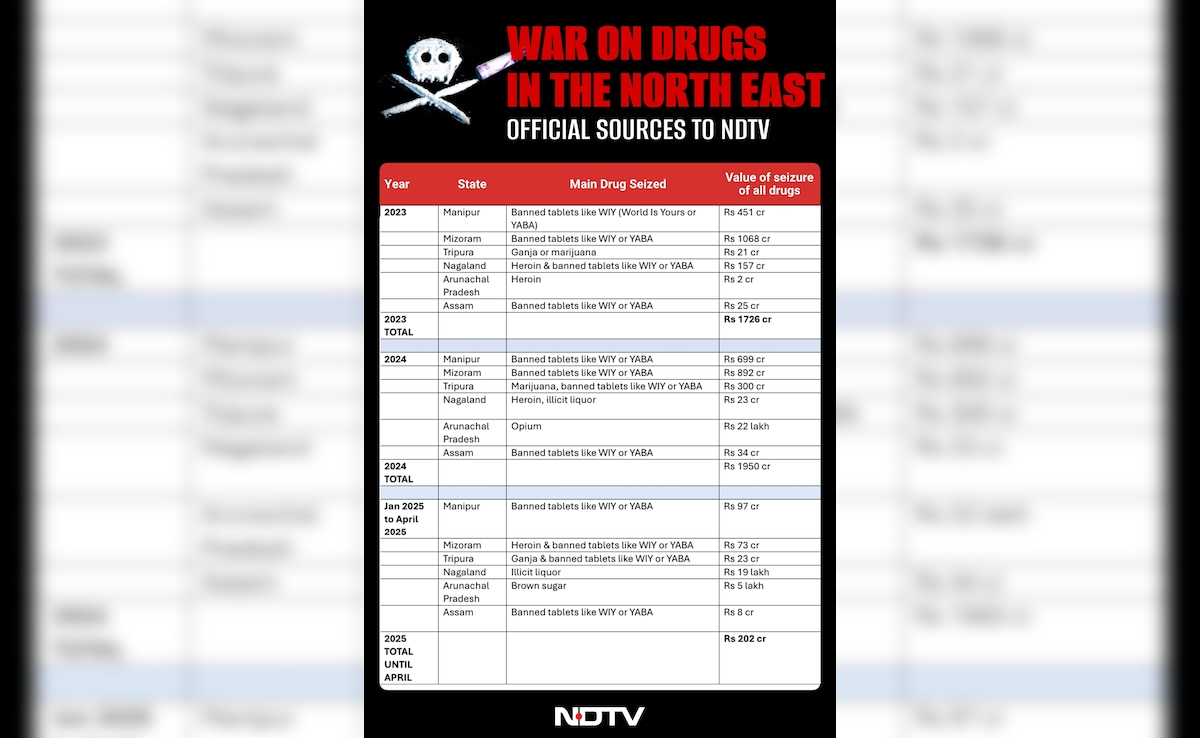
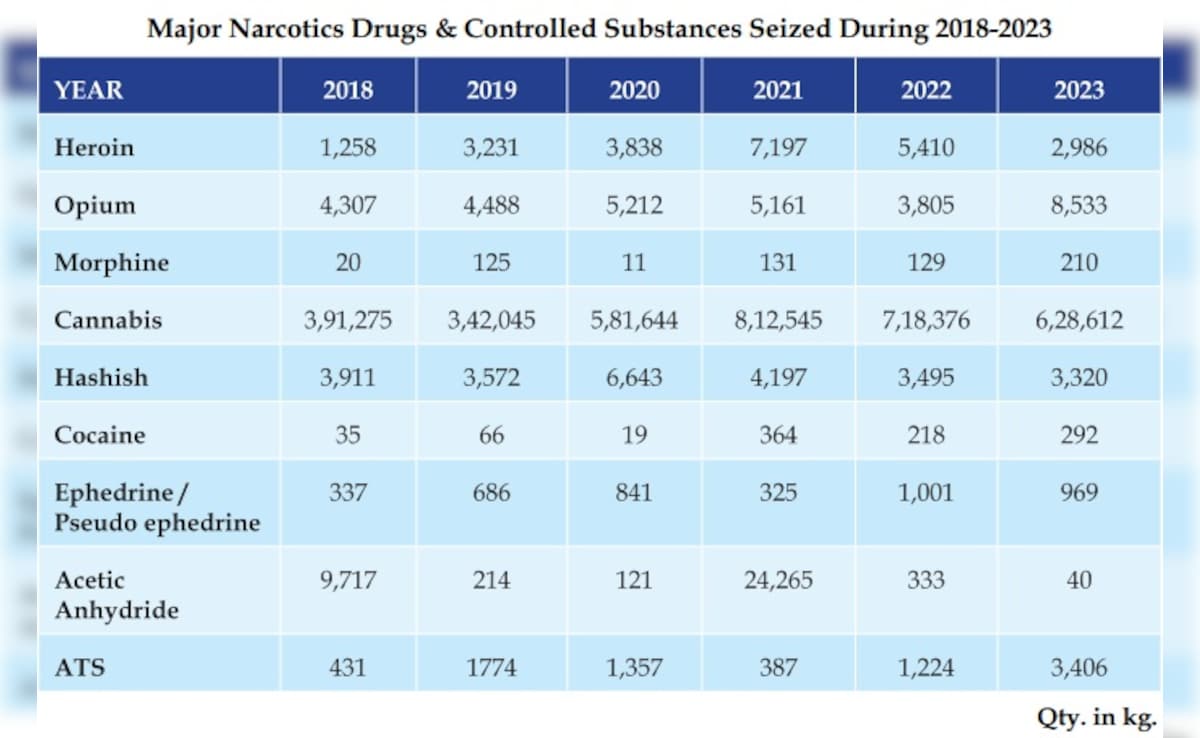
Source: Narcotics Control Bureau Annual Report 2023-24
Rise Of Myanmar In Global Drug Trade With China's Backing
With the Taliban banning illicit cultivation of poppy and opium in 2023, Myanmar has emerged as the world's largest cultivator of opium. According to the United Nations Office on Drugs and Crime (UNODC), Myanmar's opium production was twice that of Afghanistan in 2024.
Over 45,000 hectares of land in Myanmar are under poppy cultivation. From poppy comes heroin and brown sugar.
This is the notorious Golden Triangle or the Death Triangle -- an area where Myanmar, Thailand, and Laos meet. This is a hub of global trade in narcotics.
A vast majority of drugs find its way into India through the northeast states.
The Chinese fund and support Myanmar's military junta. The junta in turn hire Nagaland-based armed insurgent groups like the NSCN (IM) and Manipur-based ZRA to fight on their behalf and provide protection to poppy fields. The ZRA also has a presence in Myanmar.
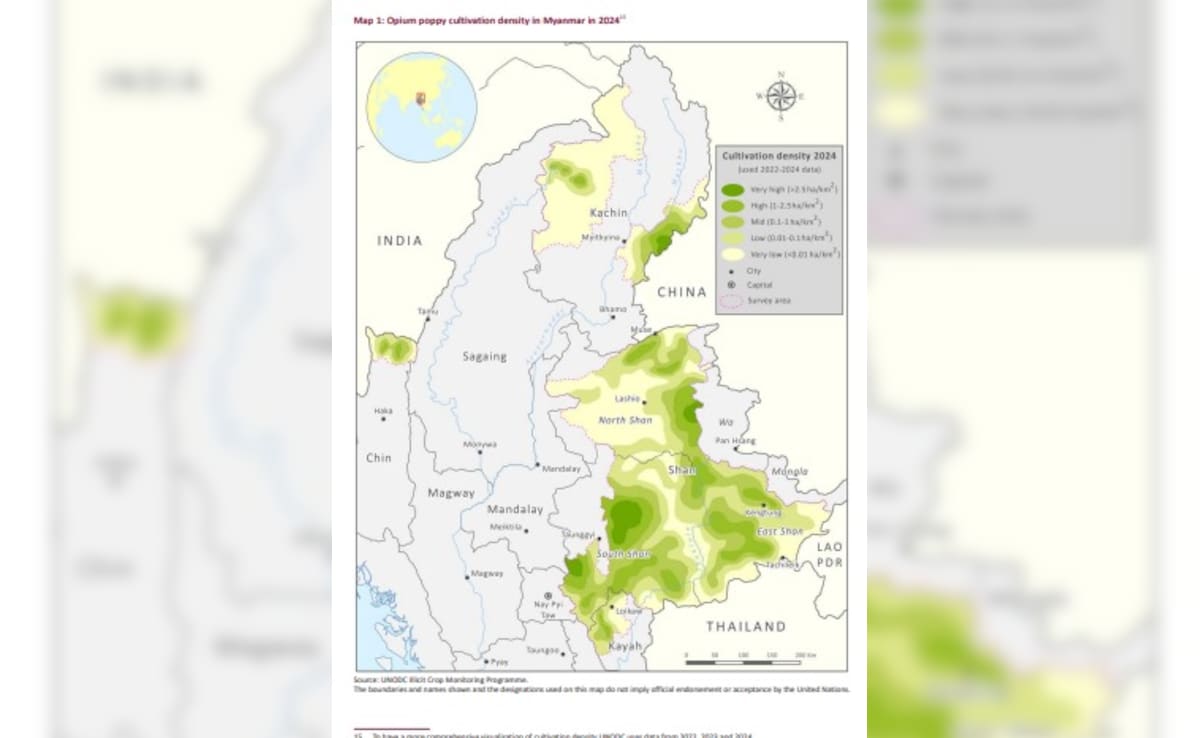
Photo Credit: Credit: UNODC
The ZRA, in particular, manages poppy fields in Myanmar's Chin and Shan areas. They also fight other rebel groups that oppose the ruling military junta.
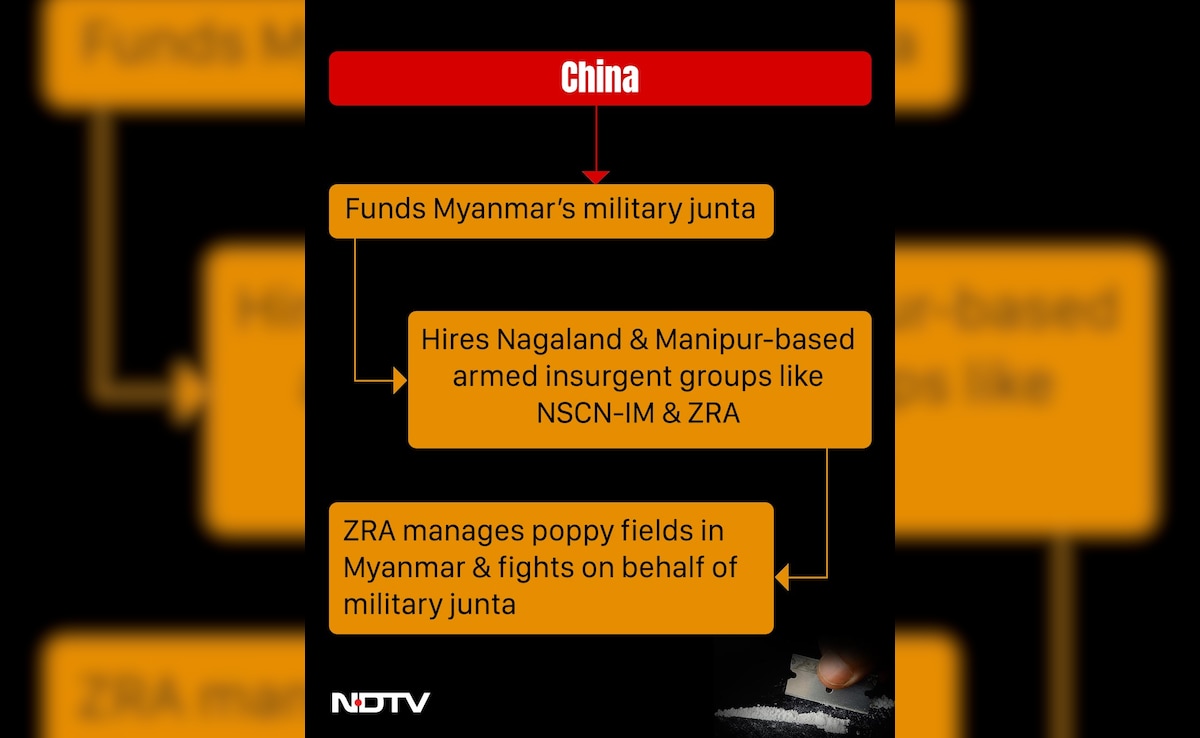
Since the National Unity Government (NUG) was displaced by a coup in 2021, the military junta has controlled most of Myanmar under the name of State Administration Council (SAC).
Armed rebel groups sprang up and formed alliances to counter the violence unleashed by the SAC. One of these rebel groups fighting against the military junta in Myanmar is the Chin National Army (CNA).
This group has trained its guns on the ZRA, which they claim is destroying Myanmarese society by encouraging poppy cultivation. The CNA has captured many areas and set fire to poppy fields which the ZRA protects.
"ZRA works and collaborates with the SAC [military junta]. The ZRA stayed together with SAC in Tedim and Tonzang townships. Last year, we captured SAC camps in Tonzang and Cikha, but the ZRA tried to retake Tonzang township from us," a CNA spokesperson told NDTV.
"Yes, it is true that there is extensive poppy cultivation in these areas for a long time. The Myanmar army, ZRA and some IIGS [Indian insurgent groups] from Manipur collected taxes from farmers," the CNA spokesperson said.
The Human Cost Of Drugs
In the 1970s, heroin flowed freely from Myanmar into India. Users would smoke the opiate. By the 1980s, heroin began to be injected. Marijuana too began to flood the Indian market.
In the 1990s, painkillers like Spasmo-Proxyvon or SP flooded the northeast. Users would powder these tablets, dilute them and inject them. Sharing of needles resulted in a large-scale HIV/AIDS epidemic.
At the beginning of the new millennium, pharmaceutical companies changed the formulation of SP -- it could no longer be diluted and injected. Methamphetamines called YABA or WY - World is Yours - became the next rage.
Since 2020, the most popular choice of drug is 'Shanflower' - a low-quality drug made of heroin - which can be chased (sniffed) or injected. It is called SF in local parlance. This drug is devastating in its addictive properties as at least 95 per cent of SF addicts who undergo rehabilitation eventually relapse, according to state government statistics.
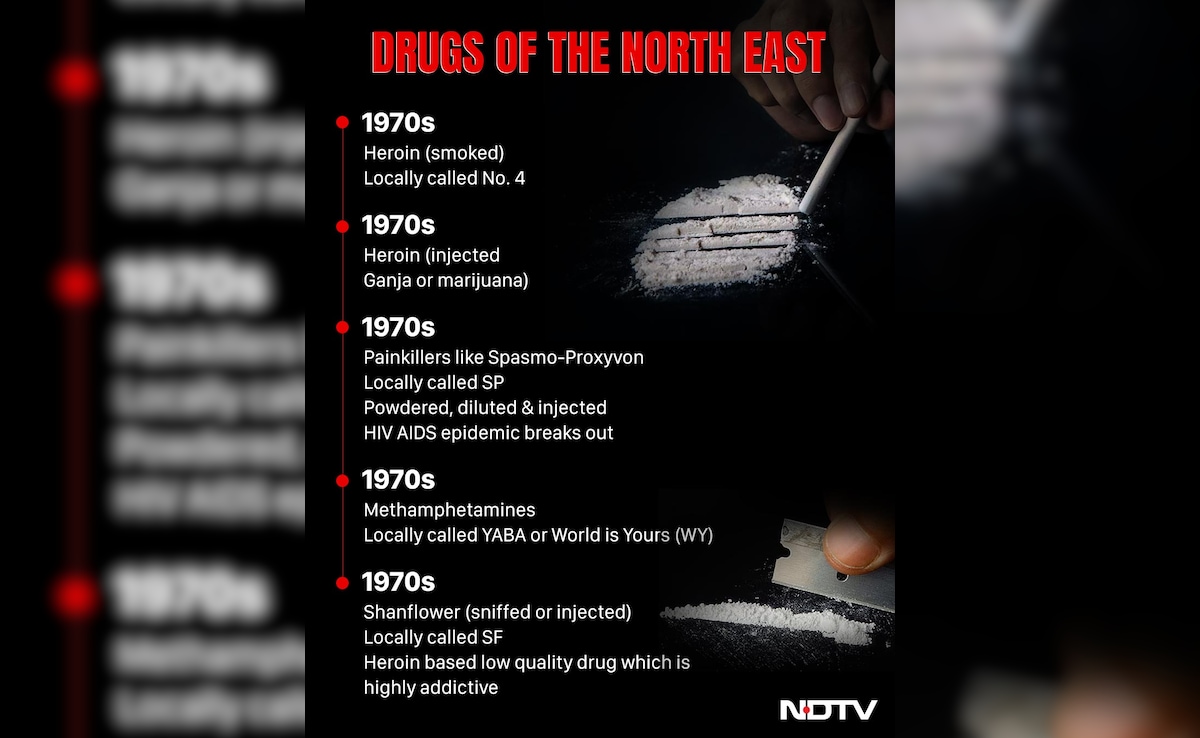
At the Shalom Rehabilitation Centre in Dimapur, young boys attempt to recover from the effects of Shanflower, YABA and alcohol.
"I started using drugs at 17," said James, a recovering addict. "I am now 21. Initially, I started with friends. I used drugs once or twice a week at first. I did not get satisfaction, so I started fixing (injecting). My brother told me not to get into this or my life would get destroyed," he added.
"But I didn't listen. My mental and physical health began to deteriorate. My education was lost. I stopped studying. It led me to stealing my own family's money. All the negative things I had never done before my addiction days, which I never thought I would do one day, I have done under the influence of this drug," he told NDTV.
Another recovering drug user, Jacob, explained how Shanflower is sold.
"This is a container in which we get drugs. Shanflower drug is sold in a tobacco container. It costs Rs 4,000 to Rs 5,000. There are two sides to this container. This will last for a maximum of two days, depending on the user," he said.
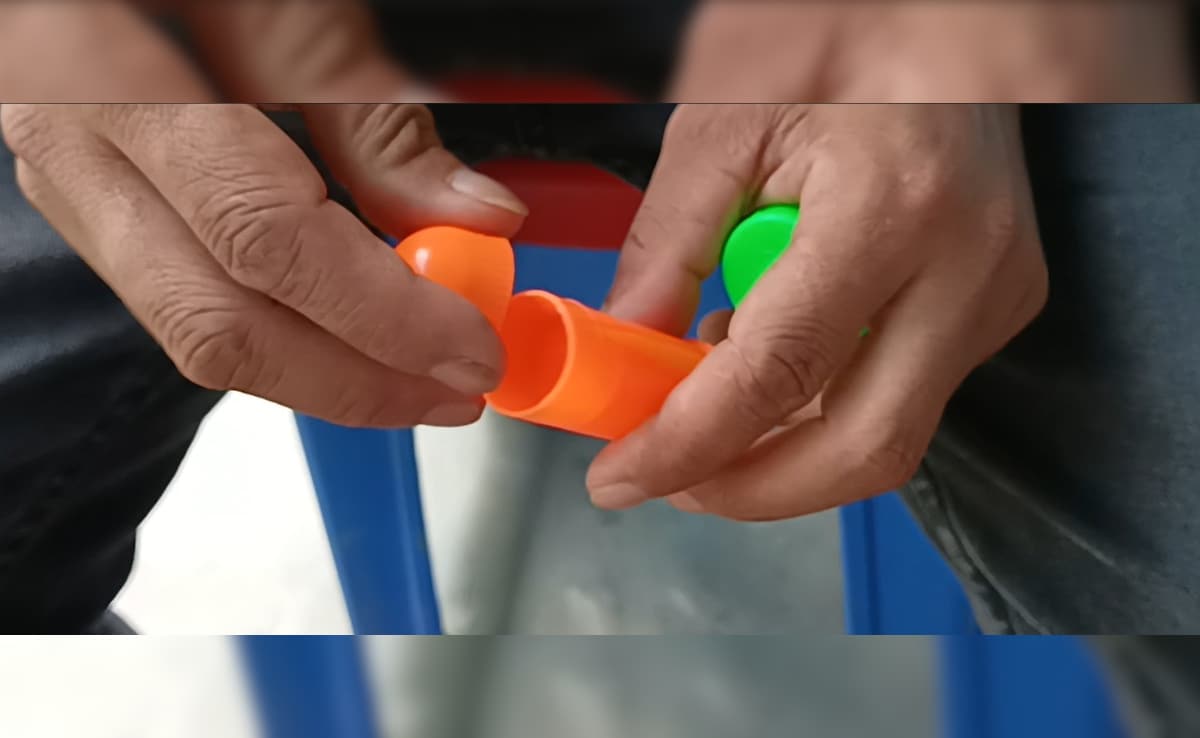
Photo Credit: Sandhya Ravishankar
A resident counsellor at the rehabilitation centre explained the horrors of withdrawals.
"First, there will be tremors. Then joint pains. Most alcoholics hallucinate for a few days. But physically they are very down - both drug addicts as well as alcoholics," said Nikheni Hriiyikho Anthony, counsellor at Shalom Rehabilitation Centre, a facility run by the Roman Catholic church.
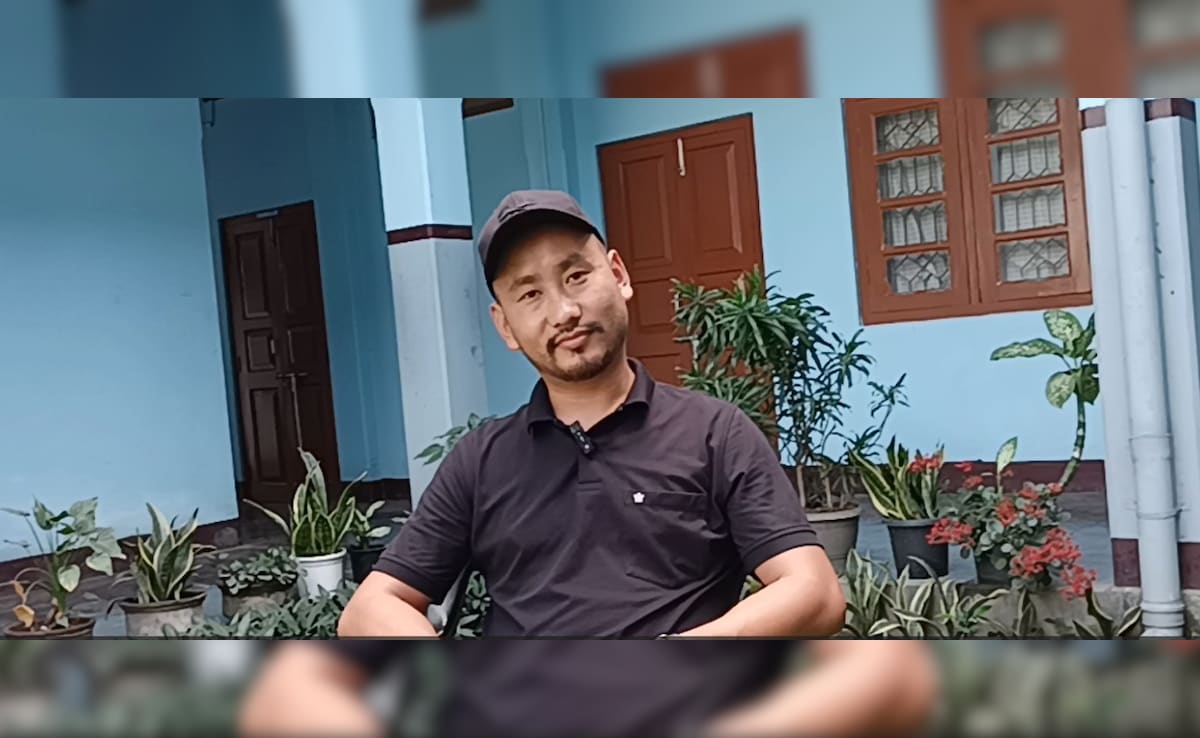
Photo Credit: Sandhya Ravishankar
Father Joseph Mariadhas, who runs the centre and has worked with drug addicts for over three decades, told NDTV the situation was dire.
"Shanflower has taken a deep root here. It is very alarming. In every family there are at least one or two people who are into substance abuse. It is not about rural or urban; this drug is everywhere and it is very alarming. It is urgent to make some interventions," he said.
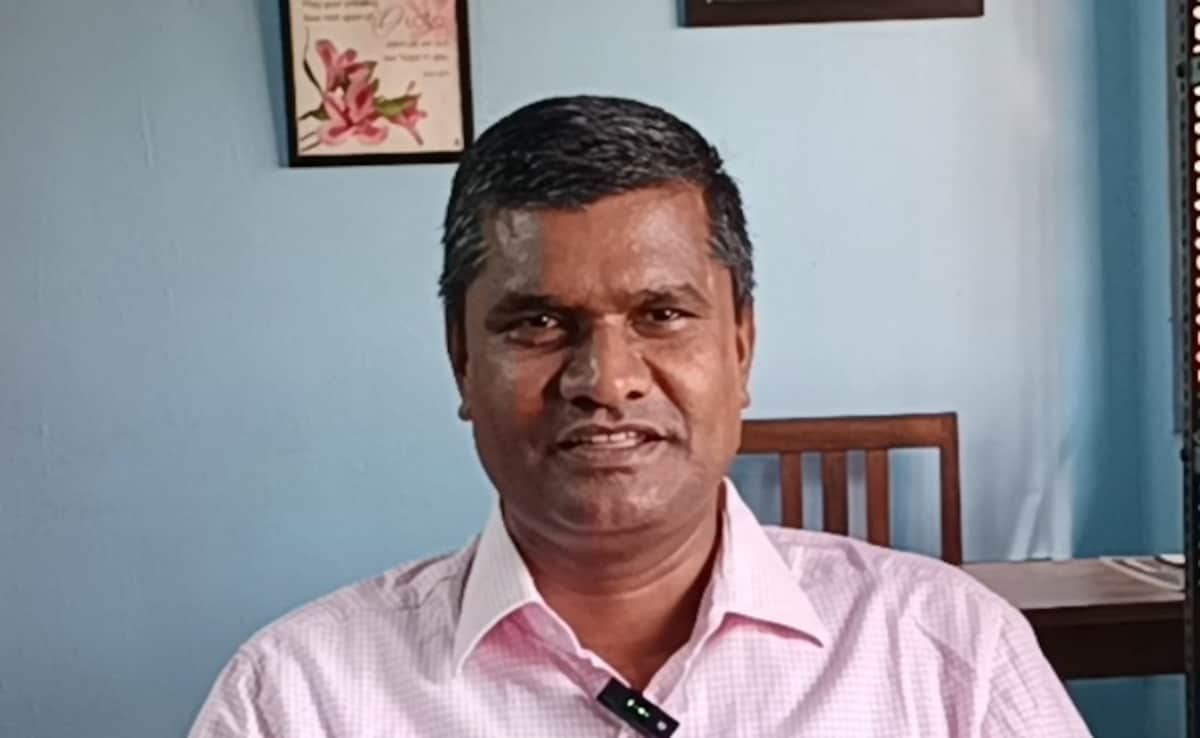
Photo Credit: Credit: Sandhya Ravishankar
Lack of stringent action to stop the flow of narcotics into the northeast would lead to China winning the unconventional war on India.
-
Opinion | Why A US Report Mentioning 'Pak Success' Has India Bristling
Just one sentence in a report of a US Congressional Commission has got a lot of knickers in a twist in India. The sentence in the 675-page report reads: "Pakistan's military success over India in its four-day clash showcased Chinese weaponry."
-
Opinion | On A Friend's Death And Dying With Dignity - By Shashi Tharoor
Last Wednesday, I received an email that turned me inside out. It came from a friend of thirty-five years. His message began warmly, praising my latest essay, but then turned devastating. "If all goes well, by next Monday I will be no more," he wrote.
-
Opinion | Why Trump And Mamdani May Not Be That Different, After All
Both Trump and Mamdani seem to be offering an emotional appeal that targets the same problem: an unaffordable America that has alienated its large majority.
-
Opinion | The Reel Is Over, But The Light Remains: Remembering Dharmendra
From the moment he strode onto the silver screen in the early 1960s, a whirlwind of raw, rustic charm, Dharmendra was an instant phenomenon. He embodied the soul of a transitioning India: tough yet tender, deeply flawed yet utterly lovable.
-
Exclusive - American Mercenaries In Gaza: Who Controls Them, What They Do
This second part of NDTV's exclusive series examines the model of security governance implemented by a mercenary group contracted to guard aid sites in Gaza.
-
Exclusive: Inside An American Mercenary Group Accused Of War Crimes In Gaza
For nearly a year, UG Solutions has become a fixture at at least four GHF distribution sites. Their presence has raised questions: Who regulates them? What are they authorised to do?
-
"Aaya Ji Nitishwa?" A Gandhi Maidan Rally Made Nitish-Lalu Split Official
Gandhi Maidan is set to witness the 10th swearing-in ceremony of Nitish Kumar after NDA's mammoth victory
-
Opinion | The 'Ten-Year Itch' in India-US Defence Relations
Hugs and personal equations between leaders do not make a nation a country of consequence. The fact is that the US would not part with critical technologies, despite all the acronym-rich pacts and treaties being signed.
-
Opinion | What Are Congress And Rahul Up To After Bihar? Hint: 'Jai Jagat Gang'
Instead of introspection, accountability and disciplinary action in the wake of the Bihar verdict, the Congress leadership is busy in a certain 'reward' exercise.
-
Opinion | IND vs SA: How The First Test Became A Lesson In Self-Sabotage
The defeat is not an isolated event; it is symptomatic of a worrying trend. This was India's fourth loss in its last eight home Tests, a shocking statistic when measured against our previous dominance - we had only lost four home Tests in the entire twelve-year span from 2012 to 2024.
-
News Updates
-
Featured
-
More Links
-
Follow Us On










